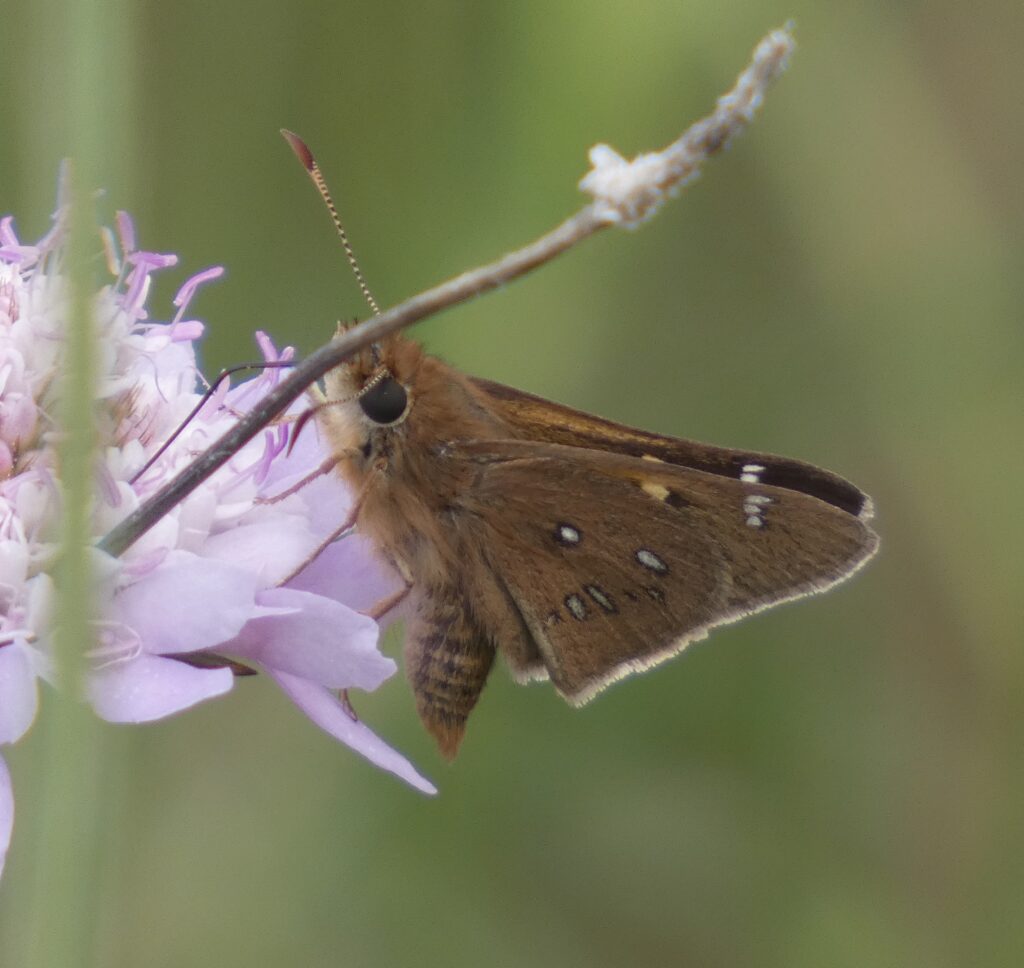Golden-haired Sedge-skipper in the spotlight
The butterfly family Hesperiidae contains a large group of butterflies referred to as ‘Skippers’. In the Green Triangle region of south-east South Australia and western Victoria we have many butterflies in this family, occurring from inland mallee and low rainfall sandy heathlands to the higher rainfall woodlands, forests and mountains, and all the way to coastal wetlands. Some species are generalists, and their larvae feed on a range of grasses (including introduced species) which has meant they have adapted to habitat change and managed to thrive. But most in this family are specialists, requiring a specific host plant or a small number of specific plants and therefore are more localised in their distribution and potentially rare and threatened.
One specialist in particular is the Golden-haired Sedge-skipper (Hesperilla chrysotricha cyclospila) which I came across recently – not for the first time, but at a new location in the Limestone Coast. This species’ habitat is damp cool gullies, forests and wetlands containing the larval host plants of the Gahnia genus. It is known to use a range of Gahnia species on Kangaroo Island in SA. However, on the mainland and more specifically in the Limestone Coast only Gahnia trifida (Cutting grass) has been recorded as its caterpillar’s food plant.
The larvae live inside shelters amongst the dense foliage of the tussocks, whereby they join several leaves together with silk, creating a bend in the leaf (see a previous article). The caterpillar then comes out at night to feed, eventually eating the leaves all the way back down to its shelter entrance. Once the caterpillar has reached maturity it will pupate inside the shelter where it will wait until the climatic conditions are suitable to emerge as an adult butterfly. They are known to fly from October to December.
Skippers fly very fast and can be difficult to follow at times, unless they are skipping about near the food plant tussocks or feeding from flowers offered by shrubs or weeds on roadsides (like Scabiosa). Males are known to patrol areas, warding off other males – this behaviour can be observed when two or more are spiraling up into the air in a rapid fight like battle.
Keep an eye out for them this summer.

